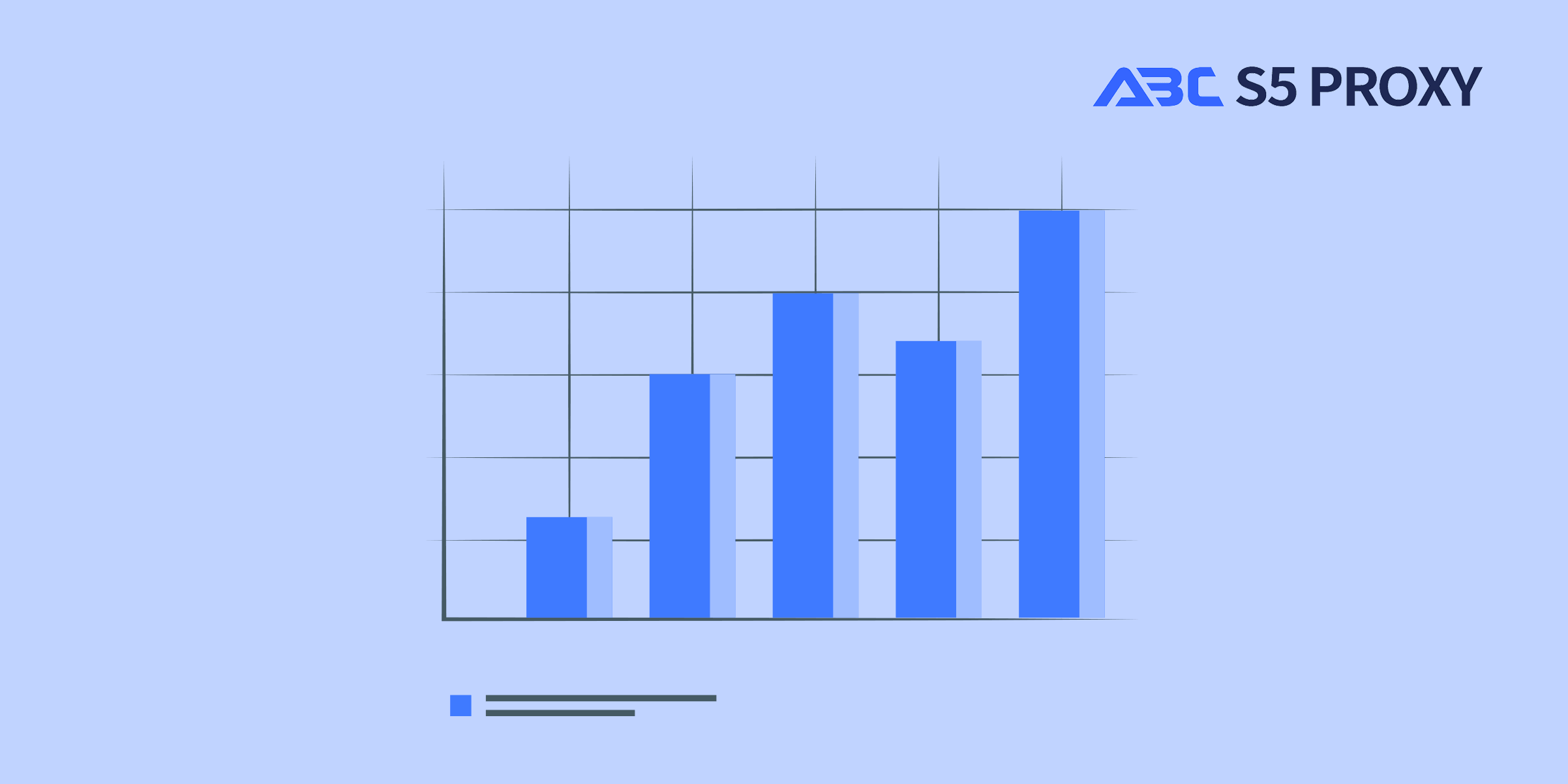Residential Proxies
Allowlisted 200M+ IPs from real ISP. Managed/obtained proxies via dashboard.

Proxies
Residential Proxies
Allowlisted 200M+ IPs from real ISP. Managed/obtained proxies via dashboard.
Residential (Socks5) Proxies
Over 200 million real IPs in 190+ locations,
Unlimited Residential Proxies
Use stable, fast, and furious 700K+ datacenter IPs worldwide.
Static Residential proxies
Long-lasting dedicated proxy, non-rotating residential proxy
Dedicated Datacenter Proxies
Use stable, fast, and furious 700K+ datacenter IPs worldwide.

Web Unblocker
View content as a real user with the help of ABC proxy's dynamic fingerprinting technology.
Proxies
API
Proxy list is generated through an API link and applied to compatible programs after whitelist IP authorization
User+Pass Auth
Create credential freely and use rotating proxies on any device or software without allowlisting IP
Proxy Manager
Manage all proxies using APM interface

Proxies
Residential Proxies
Allowlisted 200M+ IPs from real ISP. Managed/obtained proxies via dashboard.
Starts from
$0.77/ GB
Residential (Socks5) Proxies
Over 200 million real IPs in 190+ locations,
Starts from
$0.045/ IP
Unlimited Residential Proxies
Use stable, fast, and furious 700K+ datacenter IPs worldwide.
Starts from
$79/ Day
Rotating ISP Proxies
ABCProxy's Rotating ISP Proxies guarantee long session time.
Starts from
$0.77/ GB
Static Residential proxies
Long-lasting dedicated proxy, non-rotating residential proxy
Starts from
$5/MONTH
Dedicated Datacenter Proxies
Use stable, fast, and furious 700K+ datacenter IPs worldwide.
Starts from
$4.5/MONTH
Knowledge Base
English
繁體中文
Русский
Indonesia
Português
Español
بالعربية

Title: Understanding the Importance of Proxy in Analyzing Financial Data
In the world of finance, the analysis of financial data is crucial for making informed decisions and evaluating the performance of companies. One important tool in this analysis is the proxy. A proxy is a document that is used to gather and interpret financial information about a company or an investment. It serves as a representative of the actual data and provides valuable insights into the financial health and stability of the entity in question.
Financial data is a treasure trove of information that can help investors, stakeholders, and analysts understand the current and potential future performance of a company. This data includes financial statements, such as balance sheets, income statements, and cash flow statements, as well as other relevant information like market trends, industry comparisons, and economic indicators.
However, interpreting raw financial data can be challenging and time-consuming. This is where proxies come in. Proxies are used to simplify and summarize complex financial information, making it easier to analyze and draw conclusions. They serve as a representation or substitute for the actual data, enabling stakeholders to make informed decisions without having to delve too deep into the intricacies of financial statements.
There are several types of proxies that are commonly used in financial analysis. One of the most common types is the peer group proxy. This proxy compares the financial performance of a company to that of its peers in the same industry. By analyzing how a company's financial data stacks up against its competitors, investors can gain valuable insights into its relative strength and weaknesses.
Another important type of proxy is the historical proxy. This proxy looks at a company's past financial data to identify trends, patterns, and anomalies. By comparing current financial data to historical data, analysts can assess the company's performance over time and make predictions about its future trajectory.
In addition, there are also market proxies, which use external market data to analyze a company's financial performance. These proxies take into account factors such as interest rates, inflation rates, and market volatility to assess the impact of external economic conditions on the company's financial health.
The use of proxies in financial analysis is not limited to investors and analysts. Companies themselves also use proxies to evaluate their own performance and make strategic decisions. By using proxies to benchmark their financial data against industry standards or historical performance, companies can identify areas for improvement and set goals for future growth.
Overall, proxies play a crucial role in the analysis of financial data. They provide a simplified and structured way to interpret complex financial information, enabling stakeholders to make informed decisions and strategic choices. Whether used to compare a company's performance to its peers, analyze historical trends, or assess market conditions, proxies are essential tools in the world of finance. By understanding the importance of proxies, investors, analysts, and companies can unlock valuable insights and drive success in the dynamic world of finance.
Featured Posts
Popular Products
Residential Proxies
Allowlisted 200M+ IPs from real ISP. Managed/obtained proxies via dashboard.
Residential (Socks5) Proxies
Over 200 million real IPs in 190+ locations,
Unlimited Residential Proxies
Use stable, fast, and furious 700K+ datacenter IPs worldwide.
Rotating ISP Proxies
ABCProxy's Rotating ISP Proxies guarantee long session time.
Residential (Socks5) Proxies
Long-lasting dedicated proxy, non-rotating residential proxy
Dedicated Datacenter Proxies
Use stable, fast, and furious 700K+ datacenter IPs worldwide.
Web Unblocker
View content as a real user with the help of ABC proxy's dynamic fingerprinting technology.
Related articles

How does the ChatGPT RAG example improve information processing capabilities
Analyze the actual application scenarios of ChatGPT combined with Retrieval Augmented Generation (RAG) technology, explore its value in knowledge integration and data acquisition, and understand how abcproxy provides underlying support for the RAG system.

How does Best Socks5 Proxy ensure anonymous network needs
This article explores the core value of Socks5 proxy in anonymous networks and analyzes how abcproxy high anonymous proxy meets diverse security needs.

How to remove website access restrictions
This article analyzes the technical principles and mainstream solutions of website access restrictions, and explores the core role of proxy IP in bypassing regional blocking and anti-crawling mechanisms. abcproxy provides multiple types of proxy IP services to help you break through network restrictions efficiently.